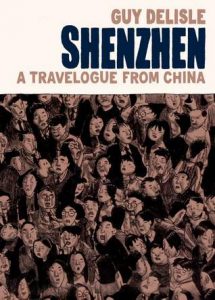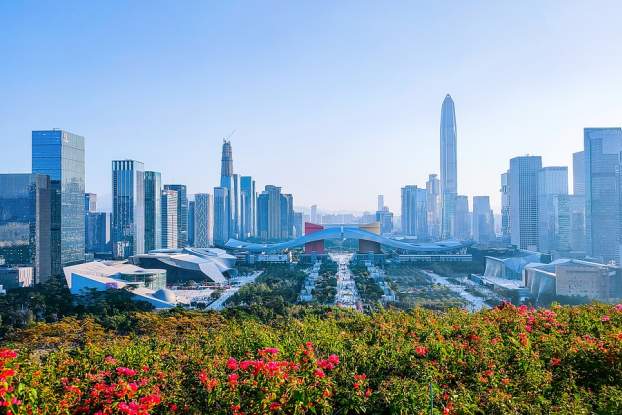In ‘Shenzhen: A Travelogue from China’, by the Canadian author, illustrator and animator Guy Delisle, we meet the perspectives of an outsider who is trying to understand the customs and life of a society – his views limited to the short time he spends there and limited to the small area which he is allowed to visit – which is totally alien to him. On a three-month visit to Shenzhen, in People’s Republic of China, as a coordinator between a Belgian animation company and a Chinese studio, Guy Delisle narrates the tediousness of the daily life that he encounter there, the difficulties caused by the language barrier and the culture shock through elegant deep black charcoal pencil illustrations.

Guy Delisle captures some of the key moments of his stay at Shenzhen – like his routine work related frustrations, mainly due to language issues, that he has with the animators, often resorting to drawing for the purpose of communications; his culinary adventures; his experiences with Chinese art books; his Christmas dinner with a colleague; his weekend trips to canton and Hong Kong; his attempts at experiencing the local sights by riding bikes; – all scrupulously in his visual narrative.
He picks both moments which are trivial and moments which are socially and politically important from his keen sense of observation for the illustrations. Artwork by Delisle is fascinating with its charm and level of detailing, and his use of shadows and darkness to contribute a layer of added meaning to the frames is laudable. His skills as an illustrator are best observed in his drawings of cityscapes and architecture.
‘Shenzhen: A Travelogue from China’ can be seen as a portrayal of his intimate thoughts, reactions to alienation and personal experiences, as the level of political observations that Delisle make in this volume is too shallow when compared to ‘Pyongyang: A Journey in North Korea’, another visual travelogue by the same author. The personal disorientation that Guy Delisle feels in the cultural surroundings of ‘Shenzhen’ – which is totally new to him – is captured lively in these cartoon panels and is portrayed with a haziness of dark tones that underline this chaos.
One scene from the book, which left too much of a distaste, was the way in which he represents the ‘Rural Flight’ in China metaphorically by comparing it to the Dante’s visions of ‘Inferno, Purgatorio, and Paradiso’. It felt exaggerated and born from arrogance, as his trips outside the ‘Shenzhen’ and to Chinese countryside were too limited to form such opinions.
His attempts in understanding the culture, life and people by relating them to his own experiences back home add further confusion, and this offers the reader a unique viewpoint of observation. This candidness and straightforwardness may make the reader feel the narrative being obnoxious and insensitive, but it is those elements which make reading Guy Delisle’s works a different experience.






